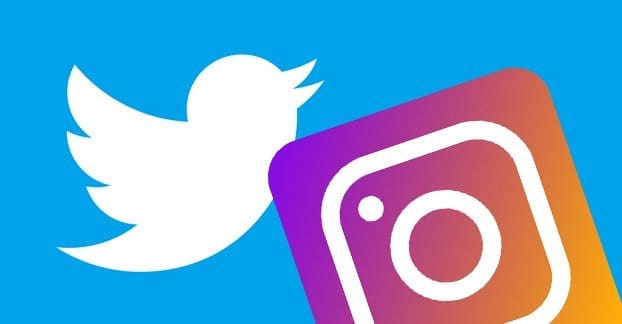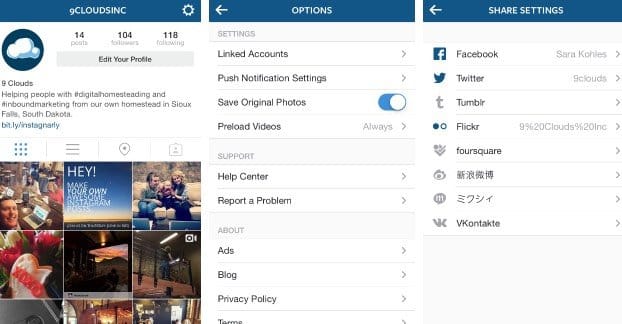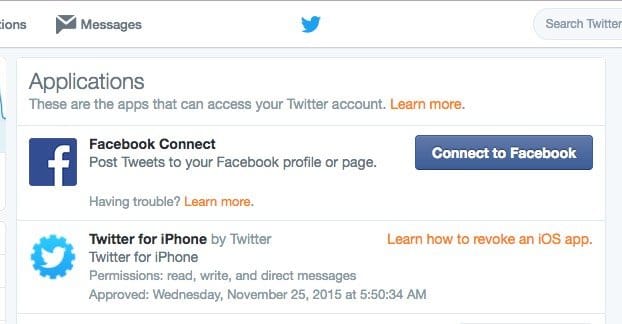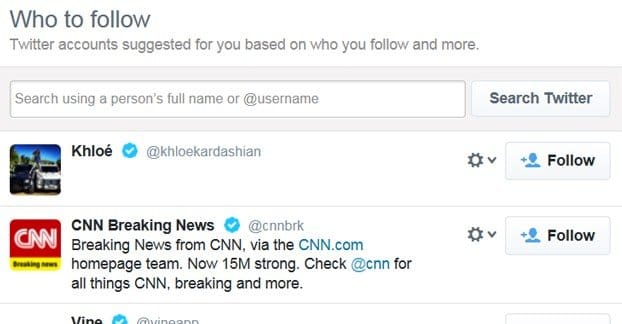 Written by ContentPowered.com
Written by ContentPowered.com
Followers are the core of your social media utilization. Without followers, a social profile is less effective than a billboard. At least with a billboard, you can post it on a road people use and they can’t really avoid it.
Today I’m going to focus on two social networks; Twitter and Instagram. You’ll probably notice that numerous tips are shared between both of them; that’s normal. Many techniques viable for one social network will work, adapted or straight, on other networks as well. Even though I’m not covering Facebook, for example, many of these techniques will work there as well.
Also note that I haven’t included any paid methods of promotion here. If you want to pay to run ads, that’s perfectly fine and perfectly safe, so long as you do it properly. It’s not entirely “safe” in that you risk losing money, however, so this article focuses more on free methods.
First, let’s start with Instagram.
Upload Clean, Professional, High Quality Images
The platform is focused entirely on images and the data that surrounds them. The text elements of the post are a footnote; if the images themselves are not sufficiently high quality, people won’t even tap to see the rest.
If you’re ever thinking about taking a snapshot with your iPhone and throwing it up with a basic filter, you’re already going about Instagram the wrong way.
Write a Compelling Bio with Keywords and Link
Instagram allows people to search, and search thrives on keywords. It’s not as robust as Google, so you can use old-school keyword optimization techniques to show up in search. Add in a link, because people can then follow that link to your website or to another social profile, for more value for you.
Connect to Facebook and Twitter
This allows you to automate cross-posting between the three sites, generally from Instagram down. Sharing Instagram posts on those other networks will get people who are interested in both to click over and check you out.

Maintain a Broad Theme for Images
Picking a theme for your images is going to be huge. It will also depend on your brand and your culture. Are you a domestic lifestyle site? An adventure and outdoor site? A site about fishing, camping, or mountaineering? A brand focused on DIY? Regardless, there’s a certain type of culture surrounding your brand, and that’s the type of culture you need to appeal to.
Routinely Like and Comment on Relevant Images
Relevance is the key here. All of those aspects of your brand that go into the theme of your profile will also go into the kind of content you search for and find.
Come up with a list of keywords and concepts that relate to your brand, and run those as searches. Browse through the content and find images you think your audience would like, and like or comment on them.
Hashtags are the central pillar of search on Instagram. It’s the way people categorize and find new content. That list of keywords you have from the previous tip can be used for hashtag searches as well. This may find you content you wouldn’t otherwise find. Do the same to that content, with a like or a comment.
Tag Potentially Interested Influencers and Amplifiers
Whenever you post content, think of influential people on Instagram who dominate your niche. If the content is something you think they might like, or they might think their audience would like, tag them in the description. This gets their attention and can get them to like or even follow you. Nothing is more powerful these days than influencer marketing.
Geotag Photos When Possible
One often neglected aspect of marketing on Instagram is the local factor, which comes through with geotargeting.
When you post an image with geographic information, people nearby can search for it and find you. This can do a lot to help broaden your local fanbase, though it does obviously mean you need to have a public location to take advantage of it.
Engage with Followers in Comments
When you post good content, people will find it and they will leave comments. As a manager of a social media profile, it’s your job to keep aware of those comments and, more importantly, respond to them when you see them. This allows you to directly engage and even get to know some of your followers, which makes them feel important and keeps them coming back.
Investigate what Direct Competitors are Doing
Your competitors are probably on Instagram as well, and that means you can spy on their profile. See what kind of content they’re posting and how it’s doing. When you see viable strategies, figure out how to copy or one-up them. You can even directly interact with them, as in ads like these.
Snipe Competitor Followers with Targeted Likes
Dig deep into the list of followers your competitors have. Look for content creators, the accounts that produce images and videos in your niche.
Perform strategic likes and comments on their content, in hopes of drawing their attention away from your competitors and to your brand. Many people will follow you as well, and a few might even abandon ship from your competitors if you are demonstrably better.
Edit Images Outside of Instagram
Whenever you want to post an image, take that image to a computer with graphical software like GIMP, Photoshop, or Paint.net. Run it through some improvements to make it stand out more, appear sharper, improve contrast, and generally make the image better. Trust me; even the people who post #nofilter are still editing their images. Careful staging and careful editing are the name of the game.
Post Regularly
One of the most important tips for any social network is to post frequently. On Instagram, that generally means about once every day. If you’re posting more than that, try not to go over three times a day.
The trick is to make sure every post is high quality. Even though the site will support frequent posting, chances are a few of your posts are going to be below average in quality, and that’s the real killer.
Include a Story in Every Photo
A picture is worth a thousand words, and a thousand words can tell quite a story. The framing, the action, the implied history of the image, and a bunch of other factors all go into putting more in an image than simply the subject and scenery. Context is everything, and the more value you can put into each image, the better.
Run Photo Submission Contests
Instagram is great for contests, because photos are easy to take these days and even easier to submit. Just ask people to use a contest-specific hashtag, judge them at the end of a deadline, and give away a prize as simple as recognition, and you’re in the money. If submissions aren’t your style, you can also run caption contests with ease.
Periodically Remove the Oldest, Worst Images
Over time, your account builds up with a lot of content, and people will actually browse back through that content, which is unique among social networks. This means it’s beneficial to you to periodically go back and remove the worst content, even if there’s not a lot to remove. It makes your overall feed look better to newcomers.
Next, let’s move on to Twitter.
Use Keywords in Your Bio
Much like with Instagram, Twitter search will find people based on keywords in their profile.
Google search will also index your profile, so you’ll show up for people running searches for Twitter along with keywords relevant to your account. Plug in a couple, worked naturally into sentences of course.
Put a URL in Your Bio
You have a field for your website already, but you can also put a link in your bio as well. I recommend using different links, such as one to your website and one to your Instagram profile. You can have a simple call to action there that everyone will see when they visit your profile.
Upload Compelling Pictures
Twitter benefits from imagery almost as much as Instagram. It’s great to post pictures, though you have to be aware that the default view will squeeze them down and crop the top and bottom unless the user clicks to expand it. Make sure you aren’t hiding the important part of the picture at the bottom. You can also share directly from Instagram, which can be very useful as a time saver.
Post a Dozen Seed Tweets
This is a tip explicitly for brand new accounts. Don’t try to market or promote your account at all until you have at least a dozen tweets already posted, ideally posted over the course of a couple of days. The timestamps and variety will allow people to see an idea of your activity level and the kinds of content you post when you finally invite them to your profile.
Link to Other Social Networks
There’s not a lot of room in your profile to link to other social networks, so you have to do it organically in your posts.
Ideally, you will simply make references to things happening on your other profiles, so people will be enticed to visit them. For example, “enter our contest on Facebook” with a link works well.
Add Social Sharing Buttons Everywhere
Social sharing buttons aren’t all that useful for Instagram, but they’re very good for Twitter, where people may want to quote or otherwise reference your content. By having Twitter – and other network – social buttons, you can turn readers into followers and followers into readers.
Post Your Twitter Handle Everywhere
There’s absolutely nowhere that you shouldn’t have your Twitter handle. Post it on your website, on your other social profiles, on your guest post bio, on your personal site, in your email signature, on your business cards, on your mass mailers, in your store, in your TV commercials, and everywhere in between. Heck, if you have a big enough scheduled buffer, post it on your gravestone; only kidding, but you get the point.
Find and Follow Relevant Accounts
Just like on Instagram, you want to locate any account that has a sizable following and that posts content in your niche.
Ideally, you will be able to link to them, build a relationship with them, and gradually network with them in a way that gets you access to their following as an extension of your own.
Unlike Instagram, where you can post a ton of hashtags on every image, Twitter has a strict character limit. Generally two hashtags is more than enough, and you can often get away with just one. Make sure to use a mixture of types of tags; the tags that you make up for your brand, the tags used by your industry, and the generalist tags like #cute.
Participate in Industry Chats
Twitter chats are hashtag-focused discussions scheduled for times when many influencers can be around and available to reply. It gets people talking, weighing in on industry events, and building connections. By participating, you’re saying you’re a part of the industry and want to be treated as such.
Respond to Replies and @Mentions
Engagement is key for any and every social network. Mentions are direct public messages about your brand and deserve notice and response.
Replies are messages to you that are generally semi-private, and allow you to talk to and address issues with customer service and the like.
Post Regularly
A schedule is important, and Twitter can support a lot of posting on a daily basis. However, make sure you have interesting things to say; posting to hear your own digital voice is a waste of attention and will drive away many users.
Run Various Social Contests
Twitter contests run the gamut from image contests to raffles run by apps. You have a wide variety of possible options for them, as well as possible prizes.
Come up with the contest, promote it on social media, and get people to enter via Twitter for best effect. Make sure you specify that the winner has to be following you to be considered the winner.
Don’t Unfollow in Bulk
One of the few things that can easily get you banned on Twitter is follower churn. When you follow a lot of accounts and unfollow a lot of accounts, Twitter assumes you’re trying to trigger follow-backs and abuse the system, and will suspend your account for abuse. Just don’t do it.
Don’t Go on Long Rants
A lot of people post lengthy messages on Twitter, but it’s really not a platform designed for it. There are much better places to have long discussions, so try not to have them on Twitter, for everybody elses sake.









